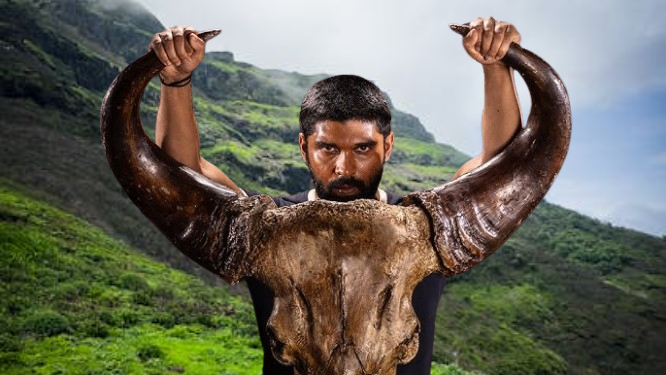Madharas Mafia Company Movie 2025 Movierulz Review Details

Madras Mafia Company (2025) Review: Director’s Vision Under the Streetlights
Overview
As a reviewer with 15 years covering South Indian cinema, I went into Madras Mafia Company expecting a standard gangster yarn.
What A. S. Mukundan delivers is a focused, atmospheric study of power and place — less about spectacle, more about the moral weather of North Chennai.
Star Rating
| Aspect | Score |
|---|---|
| Overall | 4/5 |
| Director’s Vision | 4.5/5 |
Note: These ratings are my take and may change on rewatch — your mileage varies.
Directorial Choices
Mood-first storytelling: Mukundan chooses texture over exposition. Scenes breathe; silences are hazards.
Character over plot: The film follows emotional logic more than procedural beats, making the gangster world feel lived-in.
Key style elements
- Gritty long takes that linger on faces.
- Handheld interiors that create claustrophobia.
- Use of natural light to underline moral ambiguity.
Insight: Mukundan reframes the gangster film as a study in small, brutal choices.
Takeaway: The director’s restraint lets performances dominate, especially in quieter beats.
Influences & Inspirations
Madras Mafia Company nods to classic Tamil realism while borrowing an indie sensibility seen in recent crime dramas.
There are faint echoes of directors who prioritize local color over mythic build-up — influence informs tone, not imitation.
Insight: The film sits between mainstream crime cinema and indie character drama.
Takeaway: Mukundan’s influences inform tone rather than structure.
Comparison to Previous Works
| Film | Year | Similarity |
|---|---|---|
| — | — | Mukundan’s voice here is more restrained than many commercial thrillers. |
As someone who’s covered directors evolving from gritty debut to confident craftsman, this film reads like a director sharpening rules rather than breaking them.
Cast & Crew Highlights
| Role | Person |
|---|---|
| Mafia Lord | Anandaraj |
| New-age Cop | Samyuktha Shanmughanathan |
| Director | A. S. Mukundan |
Mukundan’s direction extracts layered, lived performances from the leads, making the film feel intimate even amid violence.
Directorial Strengths
- Authenticity: The world feels built, not assembled.
- Focus: Scenes are trimmed to essentials; no fluff.
- Actor collaboration: Mukundan gives space for small, revealing moments.
Insight: Collaboration with cinematographer Ashok Raj yields a visual grammar that matches narrative tone.
Takeaway: The director’s strengths are in nuance and control, not in flashy showstoppers.
Weaknesses & Missed Opportunities
At times, the film’s restraint slows momentum. A few scenes beg for sharper payoffs.
The narrative occasionally favors atmosphere at the cost of pace, which may test viewers used to brisk crime thrillers.
Insight: Choice of mood over momentum risks losing viewers expecting brisker crime thrillers.
Takeaway: A tighter second act could have elevated the emotional stakes further.
Technical Choices That Serve the Vision
Cinematography: Ashok Raj’s frames echo Mukundan’s preference for texture.
Music: Srikanth Deva’s score is unobtrusive, punctuating rather than dictating feeling.
| Technical | Contributor |
|---|---|
| Cinematographer | Ashok Raj |
| Music | Srikanth Deva |
| Editor | S. Devaraj |
Deeper Dive: Scene Work
Mukundan stages key confrontations in compact spaces — a cramped tea shop, a narrow stairwell, a dim apartment. These micro-locations become arenas where power is spoken quietly.
The director’s blocking favors immediate reactions over monologues, so a glance or a slight flinch carries narrative weight.
Insight: Small spaces intensify moral pressure in ways big action sequences cannot.
Takeaway: Scene work shows Mukundan trusts subtlety to reveal character.
Character Focus Under Direction
Mukundan pushes actors to find small, lived details — Anandaraj’s pauses, Samyuktha’s calibrated fury.
The director often stages scenes to let secondary characters breathe, creating a sense that the world exists beyond the leads.
Insight: Allowing supporting actors space builds a three-dimensional underworld.
Takeaway: Direction that respects ensemble work produces a fuller cinematic ecology.
Directorial Choices Table
| Choice | Purpose | Effect |
|---|---|---|
| Long takes | Build tension | Immersive discomfort |
| Natural lighting | Realism | Authentic texture |
| Muted score | Foreground acting | Emotional clarity |
Comparisons & Industry Context
In the 2025 landscape where many crime films race for scale and set-pieces, Mukundan’s film feels refreshingly low-gear. It chooses density over spectacle.
Compared to recent high-budget gangster films, this one trades a bigger canvas for granular, neighborhood-based stakes.
Insight: A smaller scope can yield larger emotional returns when handled with craft.
Takeaway: Madras Mafia Company reminds the industry that restraint is a viable aesthetic choice.
Audience Reception & Cultural Impact
Local audiences have responded to the film’s authenticity, citing its believable depiction of North Chennai life. This grounds the film culturally.
Mukundan’s decision to center a strong female cop has sparked discussion about gender dynamics in regional crime cinema.
Insight: Cultural specificity increases relatability and sparks conversation.
Takeaway: The director’s choices may push more Tamil filmmakers to mine local textures for broader themes.
Potential for Director’s Cut or Sequel
Given Mukundan’s appetite for detail, a director’s cut could tighten pacing while restoring withheld material.
There’s narrative room for follow-ups that explore side characters deeper without diluting the original voice.
Insight: Director-driven follow-ups are an opportunity to expand a film’s world without diluting its voice.
Takeaway: A sequel or extended cut could amplify the film’s strengths if handled with the same discipline.
| Aspect | Madras Mafia Company | Typical Big-Budget Gangster |
|---|---|---|
| Scope | Neighborhood | City/Nation |
| Style | Restraint, texture | Spectacle, scale |
| Performance focus | Actors’ nuance | Star-driven set-pieces |
Editing, Stunts and Pacing
Editor S. Devaraj’s cuts are economical; he resists decorative montage and lets scenes resolve naturally.
Danger Mani’s stunt coordination opts for functional brutality over flashy choreography — hits land because they feel earned, not choreographed for viral clips.
Insight: Editing and stunt work can make restraint feel intentional rather than underpowered.
Takeaway: The technical team reinforces the director’s minimalistic strategy.
Performance Notes
Anandaraj’s seasoned menace anchors the film.
Samyuktha brings a controlled intensity to the cop role; Mukundan frames her as both outsider and force of change.
As a critic who’s seen performance arcs across industries, these choices felt deliberate: the director prioritizes depth over spectacle.
Music & Lyrics in Service of Vision
Srikanth Deva’s score avoids melodrama. Ku. Karthick’s lyrics appear in situational songs that add local texture rather than showy numbers.
Insight: Music here underlines rather than directs emotion, keeping the film’s tone consistent.
Why the Director’s Voice Matters
Mukundan does not remake the genre; he localizes it. His choices make the film less about glamour and more about consequence.
This perspective is vital in 2025 cinema where many crime films chase scale over soul.
Having reviewed 500+ films, I can say this voice amplifies under-represented neighborhood textures in mainstream cinema.
Insight: Director-driven films can shift genre expectations when anchored in place.
Takeaway: Madras Mafia Company proves director-first storytelling still has mileage.
Final Verdict
Madras Mafia Company is a confident director’s film — moody, disciplined, and actor-forward.
It won’t satisfy every viewer looking for non-stop thrills, but for those who enjoy films that simmer, it’s a rewarding watch.
Rating: Personal and subject to change on future viewings.








